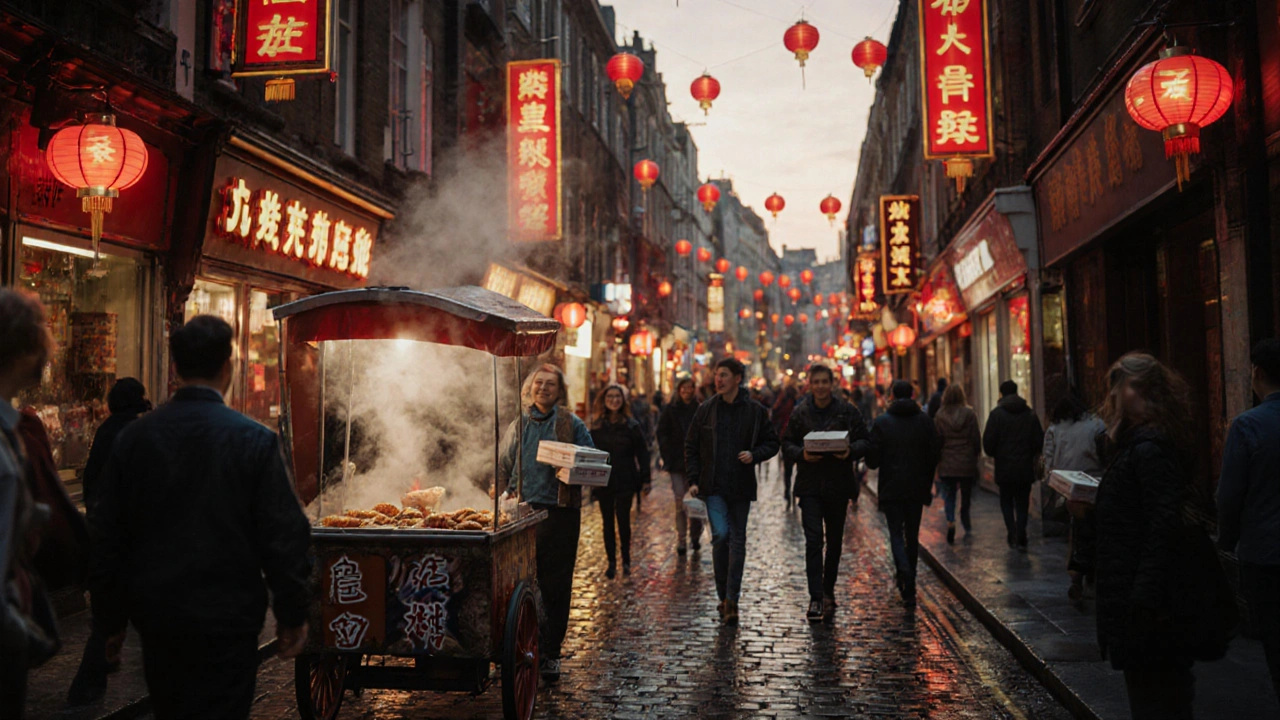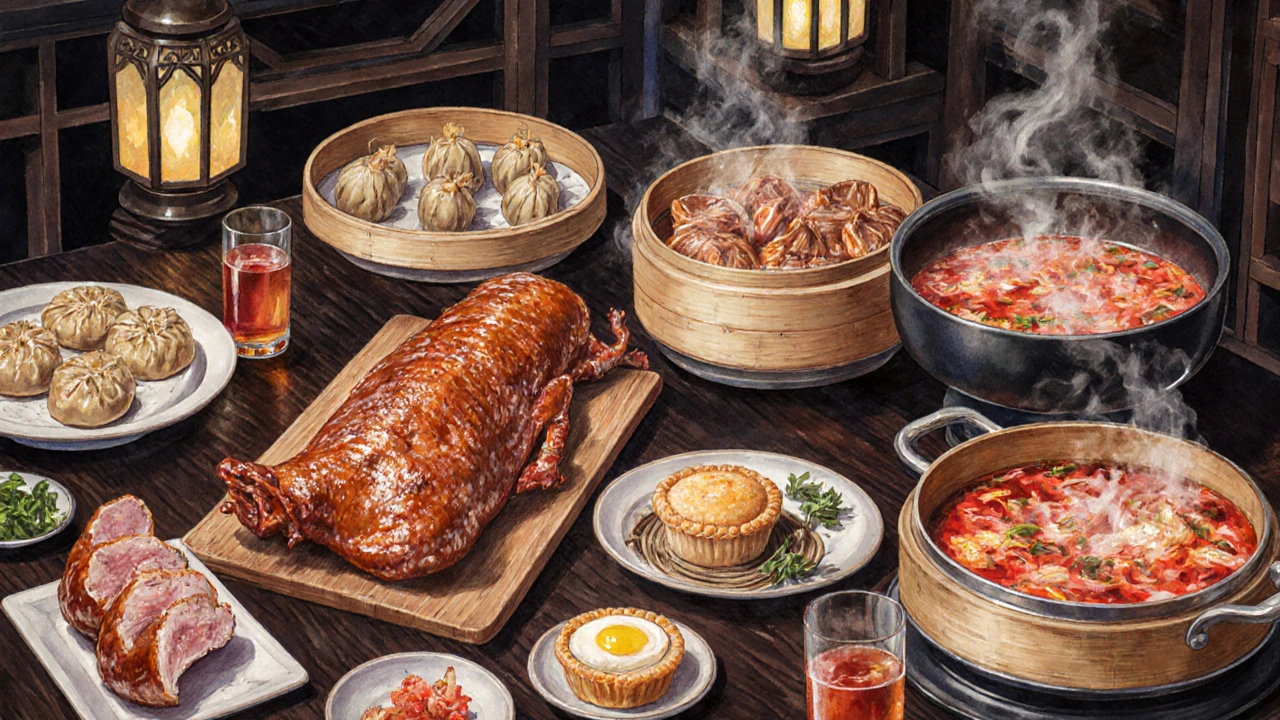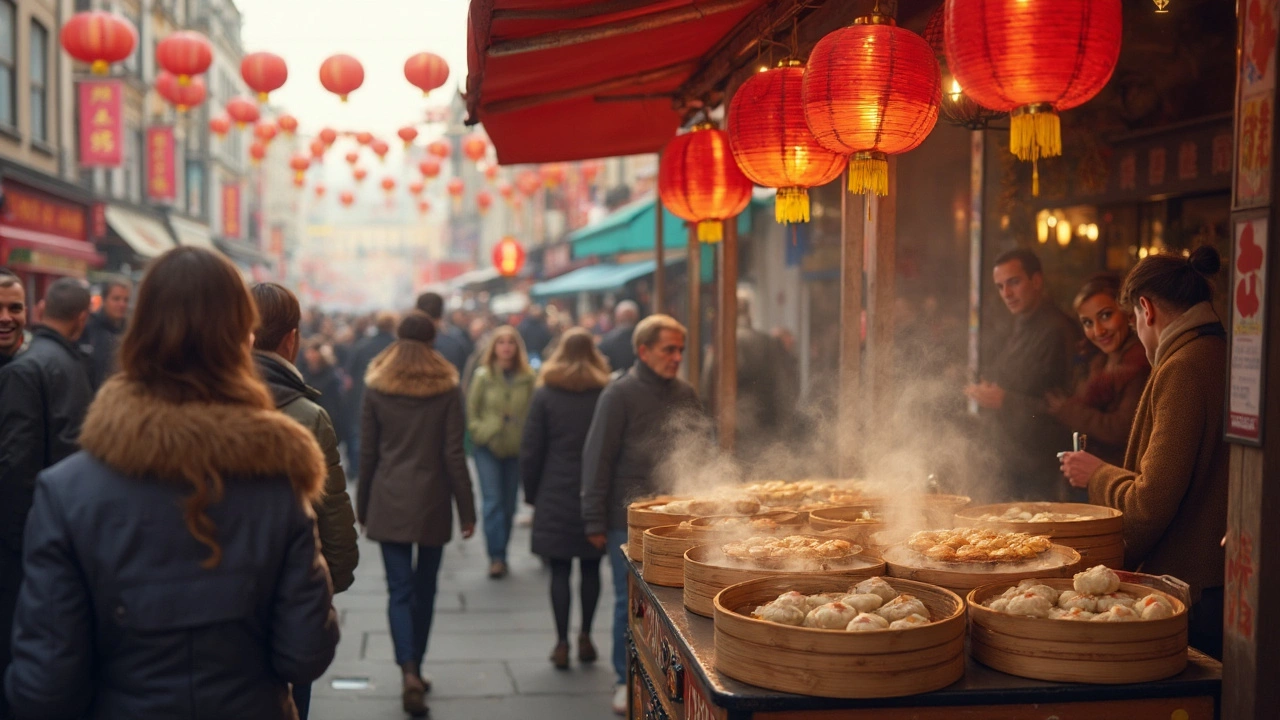
Quick Takeaways
- Chinatown London packs more than 30 distinct eateries into a few blocks.
- Must‑try dishes: dim sum, Peking duck, Sichuan hot pot, hand‑pulled noodles, and egg tarts.
- Best value spots are street‑food stalls and family‑run cafés; upscale experiences reserve tables at Yauatcha or Four Seasons.
- Peak times: lunch (12‑2pm) and dinner (6‑8pm). Go early or late for shorter queues.
- Safety tip: choose venues with visible kitchen hygiene ratings and avoid unlicensed stalls.
Direct Answer
If you want the best food Chinatown London has to offer, head to Four Seasons for legendary roast duck, grab a basket of steaming Dim Sum at BaoziInn, and finish with a sweet egg tart from Yauatcha a modern teahouse with award‑winning pastries. Combine these stops with a quick walk through the market stalls, and you’ve covered the essential flavors of Chinatown.
Comprehensive Guide to the Best Food in Chinatown London
Strolling down Gerrard Street feels like stepping onto a miniature Shanghai boulevard. Neon signs flicker, the scent of char‑grilled meat mingles with jasmine tea, and the clatter of wok pans creates an irresistible soundtrack. Whether you’re a first‑timer or a seasoned foodie, this guide will help you navigate the maze of flavors, avoid the tourist traps, and discover hidden gems that locals swear by.
Definition and Context
Chinatown London is a historic enclave located in the West End, bordered by Gerrard Street, Lisle Street, and Wardour Street. Established in the 1950s by Cantonese immigrants, it now hosts a blend of Cantonese, Sichuan, Taiwanese, and modern fusion concepts. The area isn’t just about restaurants; it’s a cultural hub with markets, tea houses, and festivals that keep the Chinese calendar alive in the heart of the UK.
Benefits of Eating in Chinatown
Choosing to dine here gives you three big wins. First, diversity - you can sample a whole country’s cuisine without leaving the block. Second, price - street stalls serve authentic dishes for under £5, while upscale venues still beat many “London” restaurants. Third, experience - the bustling atmosphere, the tea‑ceremony demonstrations, and the festive lanterns turn a simple meal into a cultural immersion.

Types of Food Available in Chinatown London
- Dim Sum: Steamed dumplings, bao, and rice noodle rolls served from rolling carts.
- Roast Meats: Crispy skin Peking duck, honey‑glazed char‑siu, and soy‑marinated pork belly.
- Noodles & Congee: Hand‑pulled lamian, wonton noodle soup, and savory rice porridge.
- Sichuan Hot Pot: Spicy broth, thin‑sliced beef, tofu, and an endless array of dipping sauces.
- Street Snacks: Curry fish balls, scallion pancakes, and bubble‑tea stalls.
- Vegetarian & Vegan: Mushroom baos, tofu dim sum, and soy‑based “mock” meats.
- Desserts: Egg tarts, mango sago, and sesame balls.
How to Find the Best Food Services in Chinatown
- Start with a map: Plot Gerrard Street, Wardour Street, and the nearby Berwick Street Market where many stall‑owners source fresh ingredients. Most top spots cluster within a 5‑minute walk.
- Read recent reviews on Google, TripAdvisor, or foodie apps like EatLondon. Look for comments about “authenticity” and “freshness”.
- Ask locals. The staff at the Hong Kong‑style bakery on Macclesfield Street can point you to the day’s best dumpling cart.
- Visit during off‑peak hours (10am-11am or after 9pm) to beat the crowds and get seating without a reservation.
- Follow social media hashtags #LondonChinatown, #DimSumLondon for pop‑up events and limited‑time menus.
What to Expect During a Meal
Walk into a typical Cantonese spot and you’ll be greeted by the aroma of roasted duck and the sounds of a wok sizzling. Tables are often tight, but the service is quick. Dim sum carts will circulate, offering you a chance to sample multiple dishes. For hot pot, expect a communal table with a built‑in gas burner - you’ll cook thin slices yourself, which adds a fun interactive element. In more upscale venues like Yauatcha, you’ll find polished wooden tables, candlelight, and a curated tea list to accompany your meal.
Pricing and Booking
Budget‑friendly options: street stall plates range £3-£7; basic dim sum plates £5-£10. Mid‑range family restaurants charge £12-£20 per person for set menus. Upscale experiences (e.g., Four Seasons, Yauatcha) start at £30 for a tasting menu, with wine pairings adding £15‑£25. Most casual places accept walk‑ins, but for popular spots (especially on weekends) it’s wise to call ahead or reserve online via their website or OpenTable. Early evening reservations (6‑7pm) are the sweet spot for getting a table without a long wait.
Safety Tips
- Check for Food Hygiene ratings displayed in the window; aim for 4 stars or above.
- If you’re trying street food, watch the vendor’s preparation area - a clean surface and fresh ingredients are good signs.
- Allergy alert: ask about hidden ingredients like peanuts or shellfish, especially in sauces.
- Keep an eye on your belongings in crowded venues - pickpockets target tourist hotspots.
- Stay hydrated, especially after a spicy Sichuan hot pot; the tea houses nearby provide soothing herbal teas.
Comparison Table: Dim Sum vs. Peking Duck vs. Sichuan Hot Pot in Chinatown
| Dish | Average Price per Person | Spice Level | Time Needed | Best For |
|---|---|---|---|---|
| Dim Sum | £10‑£15 | Mild‑Medium | 30‑45min | Group brunch, tea‑time sampling |
| Peking Duck | £25‑£35 | None | 60‑90min | Special occasion, meat‑lovers |
| Sichuan Hot Pot | £20‑£30 | High (adjustable) | 45‑75min | Spice seekers, interactive dining |
Frequently Asked Questions
What are the must‑try dishes for a first visit?
Which dishes should I prioritize?
Start with a dim sum platter at BaoziInn, then head to Four Seasons for its celebrated Peking duck, and finish with a sweet egg tart from Yauatcha. If you love heat, a Sichuan hot pot at The Hot Pot House adds a thrilling kick.
Are there vegetarian options?
Absolutely. Many stalls offer mushroom buns, tofu dim sum, and vegetable spring rolls. The vegetarian menu at Pure Veggie Kitchen is fully plant‑based and highly praised.
Do I need to book a table?
For casual street food or lunch dim sum you can walk in. For dinner at popular spots like Four Seasons or Yauatcha, especially on weekends, a reservation 2‑3 days ahead secures a seat.
Is Chinatown safe for tourists?
Yes. The area is well‑lit and heavily patrolled. Just keep an eye on belongings in busy queues, as you would in any popular city centre.
What’s the best time to avoid crowds?
Visit early for breakfast (9‑10am) or late after 9pm. Mid‑day (12‑2pm) and early evening (6‑8pm) are peak periods.
Ready to Eat?
Now that you’ve got the insider map, the must‑try dishes, and the safety checklist, it’s time to walk the streets of Gerrick Street and fill your belly with authentic flavors. Grab a friend, a map, and an appetite - Chinatown London is waiting.
Comments (7)
- zulfa eliza
- October 17, 2025 AT 14:23 PM
Alright, let me set the scene – Chinatown is a culinary carnival that blows any ordinary city block out of the water! I’m saying you can’t call it “just another food street” without insulting the whole experience. Dive into the dim‑sum carts and feel the steam kiss your face, then chase it with a crackling Peking duck that shreds like fireworks. The vibe here is inclusive, buzzing, and unapologetically bold, so bring your appetite and an open heart. Trust me, you’ll walk away gloriously stuffed and happy.
- Lauren de Bruyn
- October 24, 2025 AT 11:53 AM
While I appreciate the enthusiasm, let’s not overlook the fact that many establishments operate under a veil of secrecy, and some health‑inspection records are deliberately obscured by corporate interests. It is essential to verify the hygiene rating displayed at the window before ordering; the official database updates nightly and can be cross‑checked online. Moreover, the government’s food‑safety guidelines are often diluted in boroughs with high tourist traffic, so vigilance is key. Stay aware, and enjoy the flavors without compromising safety.
- akash gupta
- October 31, 2025 AT 08:23 AM
Listen up fellow food nerds the Chinatown circuit operates like a high‑density gastronomic network. Every stall is a micro‑enterprise delivering hyperlocal flavor profiles. The dim sum carts utilize steam infusion technology that maximizes umami extraction. Hand‑pulled noodles showcase dough elasticity metrics that rival industrial pasta makers. Peking duck masters employ lacquered roasting chambers calibrated for skin crispness ratio. Sichuan hot pot broth is a capsaicin‑laden emulsion designed for peripheral receptor stimulation. Vendors source produce from Berwick Street market ensuring farm‑to‑table traceability. The hygiene rating system integrates HACCP compliance checks and public health audit logs. Patrons often leverage real‑time review APIs to rank venues based on service latency. Queue dynamics follow Poisson distribution patterns especially at peak lunch windows. Tourist influx creates demand spikes that can be modeled with load‑balancing algorithms. Street food pricing adheres to a cost‑plus markup formula keeping plates under ten pounds. Beverage pairings such as jasmine tea provide catechin antioxidants that aid digestion. Reservation platforms like OpenTable expose seat availability through JSON endpoints. Ultimately the Chinatown experience is a synergistic blend of culture taste and efficient operational design
- Albert Sarvis
- November 7, 2025 AT 05:53 AM
Dear reader, I wholeheartedly endorse the recommendation to explore the diverse offerings within Chinatown. Your eagerness to sample a range of dishes reflects a commendable culinary curiosity. It is advisable to allocate sufficient time for each establishment to fully appreciate the nuanced preparations. Should you encounter any difficulty securing a reservation, I suggest contacting the venue directly ahead of your visit. By maintaining a courteous demeanor and adhering to the outlined safety protocols, you will ensure an enjoyable and memorable dining experience. Warm regards.
- becky cavan
- November 14, 2025 AT 03:23 AM
Totally love the guide-will try the duck tomorrow!
- Joel Barrionuevo
- November 21, 2025 AT 00:53 AM
It’s fascinating how a single dish can become a portal to cultural memory, reminding us that food carries stories beyond taste.
- Devin Payne
- November 27, 2025 AT 22:23 PM
While the guide is thorough, it fails to acknowledge the superior culinary techniques rooted in traditional British gastronomy that remain unmatched by foreign influences; nevertheless, the occasional Asian fare can provide a modest palate diversion.






